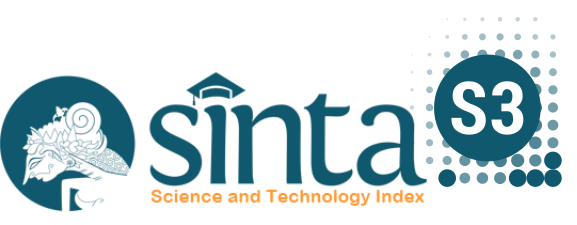Postoperative pain experience in post caesarean section mothers in developing countries: A scoping review
DOI:
https://doi.org/10.31101/jhtam.3925Abstract views 394 times
Keywords:
Postpartum Women, Pain, Caesarean Section, Developing CountriesAbstract
Downloads
References
Arksey, H., & O’Malley, L. (2005). Scoping studies: towards a methodological framework. International Journal of Social Research Methodology, 8(1), 19–32. https://doi.org/10.1080/1364557032000119616
Azanu, W. K., Osarfo, J., Larsen-Reindorf, R. E., Agbeno, E. K., Dassah, E., Amanfo, A. O., Dah, A. K., & Ampofo, G. (2022). Assessment and determinants of acute post-caesarean section pain in a tertiary facility in Ghana. PLoS One, 17(5), e0268947.
Bohren, M. A., Mehrtash, H., Fawole, B., Maung, T. M., Balde, M. D., Maya, E., Thwin, S. S., Aderoba, A. K., Vogel, J. P., Irinyenikan, T. A., Adeyanju, A. O., Mon, N. O., Adu-Bonsaffoh, K., Landoulsi, S., Guure, C., Adanu, R., Diallo, B. A., Gülmezoglu, A. M., Soumah, A. M., … Tunçalp, Ö. (2019). How women are treated during facility-based childbirth in four countries: a cross-sectional study with labour observations and community-based surveys. The Lancet, 394(10210), 1750–1763. https://doi.org/10.1016/S0140-6736(19)31992-0
Dieb, A. S., Shoab, A. Y., Nabil, H., Gabr, A., Abdallah, A. A., Shaban, M. M., & Attia, A. H. (2020). Perineal massage and training reduce perineal trauma in pregnant women older than 35 years: a randomized controlled trial. International Urogynecology Journal, 31(3), 613–619. https://doi.org/10.1007/s00192-019-03937-6
Garba, Jamilah, Panti, Yakubu, Ukwu, & Burodo. (2021). Post-operative Experience following Caesarean Section in a Nigerian Obstetric Population. Annals of Basic and Medical Sciences, 3(1), 9–15.
Harini, R., Juwitasari, J., Setyowati, L., & Oktavia, R. D. (2021). Post-caesarean section pain and quality of sleep among mothers who delivered by caesarean section under spinal anesthesia. Malahayati International Journal of Nursing and Health Science, 3(2), 110–116. https://doi.org/10.33024/minh.v3i2.3473
Kintu, A., Abdulla, S., Lubikire, A., Nabukenya, M. T., Igaga, E., Bulamba, F., Semakula, D., & Olufolabi, A. J. (2019). Postoperative pain after cesarean section: assessment and management in a tertiary hospital in a low-income country. BMC Health Services Research, 19, 1–6.
Marfuah, Nurhayati, Mutiar, Sumiati, & Mardiani. (2019). Pain intensity among women with post-caesarean section: A descriptive study. KnE Life Sciences.
Maulani, H., Maulida, H., Jariyah, I., & Putri Jullizir, N. (2021). Description of Knowledge and Behavior Levels About Breast Examination (Best Self-Examination) in Adolescent Women. Muhammadiyah International Public Health and Medicine Proceeding, 1(1), 227–238. https://doi.org/10.53947/miphmp.v1i1.50
Moshfaq, M., Debnath, K. C., & Haq, S. (2022). An Assessment of Postoperative Pain Management Undergoing Cesarean Section. 4929, 789–793. https://doi.org/10.36348/sjmps.2022.v08i12.009
Noviyanti, H. A., Sutrisna, M., Kusmiran, E., Tinggi, S., Kesehatan, I., Bandung, K., Barat, J., & Bengkulu, U. D. (2017). Hubungan Intensitas Nyeri dengan Kualitas Tidur pada Pasien Pasca Bedah Sesar Relationship Between Pain Intensity With Sleep Quality of Patient Post Caesarean Section.
Rashidi, Valiee, Roshani, & Shahoei. (2019). The effect of early oral feeding on post-caesarean pain: A randomized clinical trial. Crescent Journal of Medical and Biological Sciences, 6(4), 481–486.
Saputra, A., Andayani, S., & Nursyam, H. (2016). Total Quantity of Phenol and Isolation Methanol Tannin Extract of Red Betel Leaf (Piper crocatum). International Journal of PharmTech Research, 9(7), 146–153.
Sari, D. P., Elsera, C., Sat, S., & Hamranani, T. (2022). Sleep Quality of Post Sectio Caesarea Mothers with the ERACS Method Kualitas Tidur
Ibu Post Sectio Caesarea dengan Metode ERACS. 285–291.
Sari, & Mila. (2022). Postpartum Care PT Global Executive Technology. In PT Global Executive Technology.
Segerdahl, M., Niklasson, B., Öhman, S. G., Blanck, A. E., & Boström, E. (2015a). Oxycodone for postoperative pain control after Cesarean section : oxycodone and metabolites’ distribution into breast milk and effect on neonate NACS score.
Segerdahl, Niklasson, Öhman, Blanck, & Boström. (2015b). Oxycodone for postoperative pain control after Cesarean section : oxycodone and metabolites’ distribution into breast milk and effect on neonate NACS score.
Siregar. (2020). The Relationship between Health Education and the Level of Knowledge and Behavior towards Self-Breast Examination (Sadari) in Grade 3 Female Students of Madrasah Tsanawiyah Negeri 1 Padang Lawas in 2019. Muhammadiyah University of North Sumatra, 21(1), 1–9.
Tricco, A. C., Lillie, E., Zarin, W., O’Brien, K. K., Colquhoun, H., Levac, D., Moher, D., Peters, M. D. J., Horsley, T., Weeks, L., Hempel, S., Akl, E. A., Chang, C., McGowan, J., Stewart, L., Hartling, L., Aldcroft, A., Wilson, M. G., Garritty, C., … Straus, S. E. (2018). PRISMA extension for scoping reviews (PRISMA-ScR): Checklist and explanation. Annals of Internal Medicine, 169(7), 467–473. https://doi.org/10.7326/M18-0850
WHO. (2018). WHO recommendations non-clinical interventions to reduce unnecessary caesarean sections.
WHO. (2021). Universal Health Coverage (UHC). WHO.
Yugistyowati, & Anafrin. (2013). The Effect of Postpartum Health Education on the Self-Care Ability of Post-Sectio Caesarea (SC) Post-Sectio Mother. 1(3), 96–100.
Downloads
Published
How to Cite
Issue
Section
License
Copyright (c) 2025 Eurosia Maria Sales, Dhesi

This work is licensed under a Creative Commons Attribution-ShareAlike 4.0 International License.
Authors who publish with Journal of Health Technology Assessment in Midwifery agree to the following terms:
- Authors retain copyright and grant the journal right of first publication with the work simultaneously licensed under a Creative Commons Attribution License (CC BY-SA 4.0) that allows others to share the work with an acknowledgment of the work's authorship and initial publication in this journal.
- Authors are able to enter into separate, additional contractual arrangements for the non-exclusive distribution of the journal's published version of the work (e.g., post it to an institutional repository or publish it in a book), with an acknowledgment of its initial publication in this journal.
- Authors are permitted and encouraged to post their work online (e.g., in institutional repositories or on their website) prior to and during the submission process, as it can lead to productive exchanges, as well as earlier and greater citation of published work.

Journal of Health Technology Assessment in Midwifery is licensed under a Creative Commons Attribution-ShareAlike 4.0 International License..













